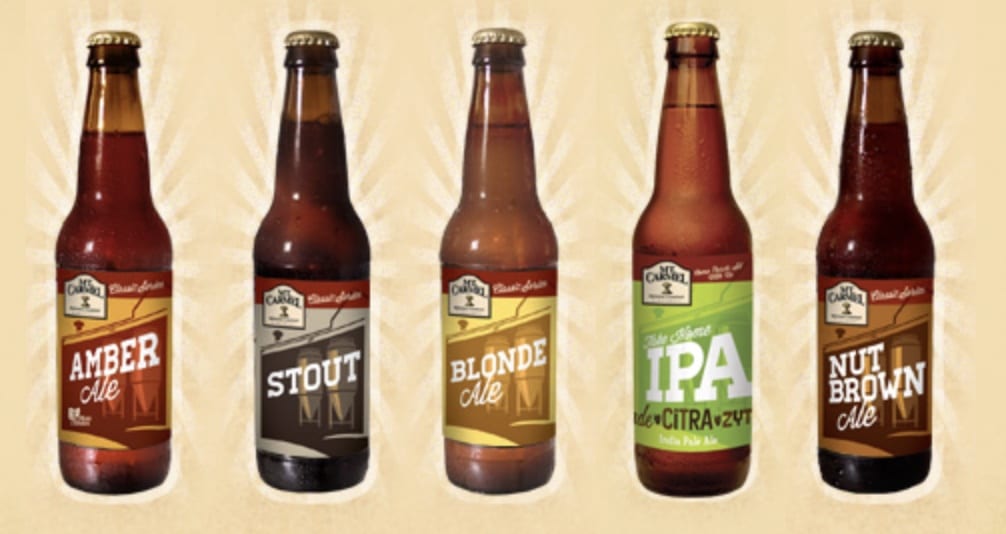Small breweries react to changing market
June 25, 2018
Enlightening comments from OBW Brewers Forum
Each year, one of the highlights of Ohio Brew Week is the Brewers Forum held at Casa Nueva Bodega in uptown Athens. A mix of Athens’ local brewers with those from others areas of Ohio provide an enlightening commentary on the state of craft brewing today. As we look forward to the 2018 panel this July, we take a look back to comments heard at the 2017 forum.

Crowded market causes brewery adjustments
With over 250 breweries, Ohio is fast becoming a mature and very competitive craft beer market. Even the population-thinner regions, like southeastern Ohio, are filling up with breweries.
It’s enlightening to see how this more crowded market is affecting small breweries such as Jackie O’s Brewery in Athens. After experiencing several years of rapid growth with its canned beer line, Brad Clark, Jackie O’s head of brewery operations, is dealing with challenges to its core brands.
“There’s a saturation point that has definitely occurred in Ohio,” said Clark, adding that it is difficult to maintain your tap handles and shelf facings out across the state. With the continued proliferation of new brands in the Ohio market, Clark said Jackie O’s is taking a pause from seeking growth this year. Shelf real estate at retailers is not keeping up with the growth of new brands.
So after years of running around like crazy just trying to catch up to the market, Jackie O’s looks to spend its time working smarter, not harder. They are focusing more internally, trying to become a better all-round business. Improving quality over quantity.

Clarke says the brewery is focusing on becoming a better employer and a better community member. They are also putting relatively more emphasis on their barrel-aging and sour beer program. By doing more of their own in-brewery bottle releases they seek to capture more of the higher margins associated with in-brewery bottle sales instead of pushing as much out to distribution.
Other small Ohio brewers also see the saturation point hitting draft accounts. Lori Wince, of co-owner at Weasel Boy Brewing in Zanesville, says it is affecting them.
“Ten years ago when we started, people were just looking for craft,” she recalled. “They weren’t necessarily looking for the latest beer,”
As Wince explained it, you used to be able to get a particular beer on tap in an account and it would remain there for multiple reorders over a period of time.
“Now, you’re now selling one keg at a time,” she said, as bar managers constantly rotate the beers on their taps, always asking what do you have that’s new.

Cameron Fuller, owner/brewer at Devil’s Kettle Brewing in Athens, explained it this way.
“There’s so many bars and restaurants that don’t commit to anything. You sell them one keg and when you go to pick it up they ask, ‘What’s new?’ And I’m like, ‘I just released this one week ago.'”
The situation is challenging for small breweries that depend on distributing a significant portion of their beer in a relatively small, regional area. If they brew a large batch of a particular beer today, the kegs may sitting in their cold rooms longer than they would prefer. In this kind of market, it’s a challenge to balance production with sales.
That was an especially strong feeling from the more mature breweries on the panel. Breweries that have been around 10 years or more feel the need to adopt a more defensive strategy in light of all the new breweries still coming on line, clogging the draft and retail accounts.
For many, Deep wins over Wide
As a part of that defensive strategy for many breweries a renewed commitment to winning your own neighborhood is key. A few years ago, most saw wide distribution as more important to their business plans. Today, they have learned the best road to profitability is selling more beer at your own taproom.
Mt. Carmel Brewing‘s Mike Dewey said that after years of placing emphasis on adding new retail accounts and more markets for its bottled beers, Mt. Carmel now focuses on driving more people to its taproom.
Mt Carmel is digging deep. While not abandoning their interest in wide distribution, their sharpest focus is squarely aimed at the local market, especially in their side of Cincinnati. It seems to be working well for them. Over the past few years they’ve not been able to accommodate the demand on their brewpub. It’s driving them to build a new beer hall and added parking so they can handle the demand.
Breweries find opportunities in different places

That which is a challenge for established breweries can be an opportunity for newer ones. In Athens, Little Fish Brewing co-founder and head brewer Sean White said his farmhouse and sour ale bottle releases are special purchase items that do not directly compete with traditional styles and things like IPAs. He thinks his interest in brewing new things all the time meshes well with the current fickle consumer environment.

White agrees that the market is changing. “It is a different model nowadays. You’re not fighting for permanent draft handles so much. You’re selling one keg of beer at a time.”
White says he is always interested in brewing something new, using interesting local ingredients to expand the beer palate.
“You can’t just follow trends and expect to put your best self forward,” he said. “You’re going to put your best self forward when you are doing what you are personally passionate about.”
This one keg at a time sales reality also makes working with beer distributors especially tough for a small brewery. That is in part why Little Fish keeps most of its distribution to accounts it knows well.
As the representative of the oldest brewery in the room, Great Lakes Brewing head brewer Mark Hunger thinks all the proliferation in beer styles that has occurred in the past decade, while difficult to navigate, is overall a positive thing. He said it wasn’t too long ago that Great Lakes only brewed a small group of pretty basic beer styles. But things have changed. Hunger praised the innovation that’s happening today.
“Now there are no rules out there,” he said. “It’s a good time to be in the industry,” he said.
Even though its core beers are just as good as ever, it appears Great Lakes has determined that bringing out new brews is its best ticket to getting tap handles and maintaining brewery relevance in a changing environment.
To IPA or not

Over the past year or two, much of the beer buzz in Ohio and elsewhere has been driven by the rapid growth of IPA, especially the hazy New England style. Brewers like Hoof Hearted Brewing, of Marengo, have made national names for themselves by releasing fresh ones about every two weeks. Small brewers, including many who never specialized in IPAs in the past, have jumped on the bandwagon adding a growing list of hoppy, hazy beers to their portfolios. Not always with the greatest results, however.
But not everyone is buying into IPAs as the best road to profitability. Instead of jumping in line with the haze craze, some Ohio brewers are taking a contrarian viewpoint.

Cameron Fuller of Devil’s Kettle is among those betting on the resurgence of traditional beer styles like lagers and English ales. He thinks that with the beer pendulum swinging so far toward innovation in beer, it is providing an opportunity for drinker to rediscover the classic brews.
Over in the Columbus region, Kindred Brewing thinks its nice to see breweries doing things other than the IPA model. Gary Robinette, Kindred’s brewer, says its nice to see things branching out, giving other styes a chance.
“We can challenge ourselves with some local styles and get back to the roots of brewing,” he said.
Most of the breweries on the panel brew at least a few straightforward traditional styles as their flagships, mostly in the same manner they have brewed them for many years (think of Great Lakes, Jackie O’s and Mt. Carmel). In most cases, these cores brands are still solidly their best selling beers.
Even newer brewery Kindred brews its core wheat ales and Pale Ales in a very traditional way. “We’re not straying too far from that,” said Robinette, “because that’s what customers in the part of Columbus that we’re in drink.”

Dewey said Mt. Carmel will probably always focus on its flagship Amber and Nut Brown ales because he thinks they do an excellent job with them.
“Even though we tried brewing just about every style under the sun, our Amber Ale is still our best seller,” Dewey added.
Seeking continued relevance
Brad Clark believes the old terms used to describe their beer, like quality and consistency, don’t resonate with today’s consumers like they used to. The younger beer drinker — those under 40 — are driving the craft beer market right now, and they are much more likely to seek out something new rather than a mature brand that, as Clark put it, focuses on quality and consistency.
“I’m trying to find new ways to describe quality and consistency,” he said. “You have to stay relevant, and that’s very difficult right now.
Staying relevant is important to Jackie O’s flagships, such as Mystic Mama IPA, because the brewery has bet so much of its future on the purchase of large-scale brewing and canning equipment to support the production of the flagships. Can a standard IPA that has been around for about 10 years remain relevant to today’s fickle IPA drinkers? That is the challenge.

With Mystic Mama accounting for about half of the volume of Jackie O’s production brewery, you can see why Clark wants to figure out how to keep it relevant to a new generation of craft drinkers. At the same time, the brewery is always brewing new beers and testing them in the Jackie O’s Public House. They have ramped up their very creative barrel program and are investing big dollars in equipment upgrades designed to improve quality and consistency of their barrel-aged beer. They are not resting on their laurels.

More than anything, what Clark is talking about is balance. The challenge of a changing market for most any brewery is how to balance what you do well with what the market wants. Hopefully, today’s beer market is broad and deep enough to encompass a brewer’s art, even when it is not kowtowing to the latest trend.

